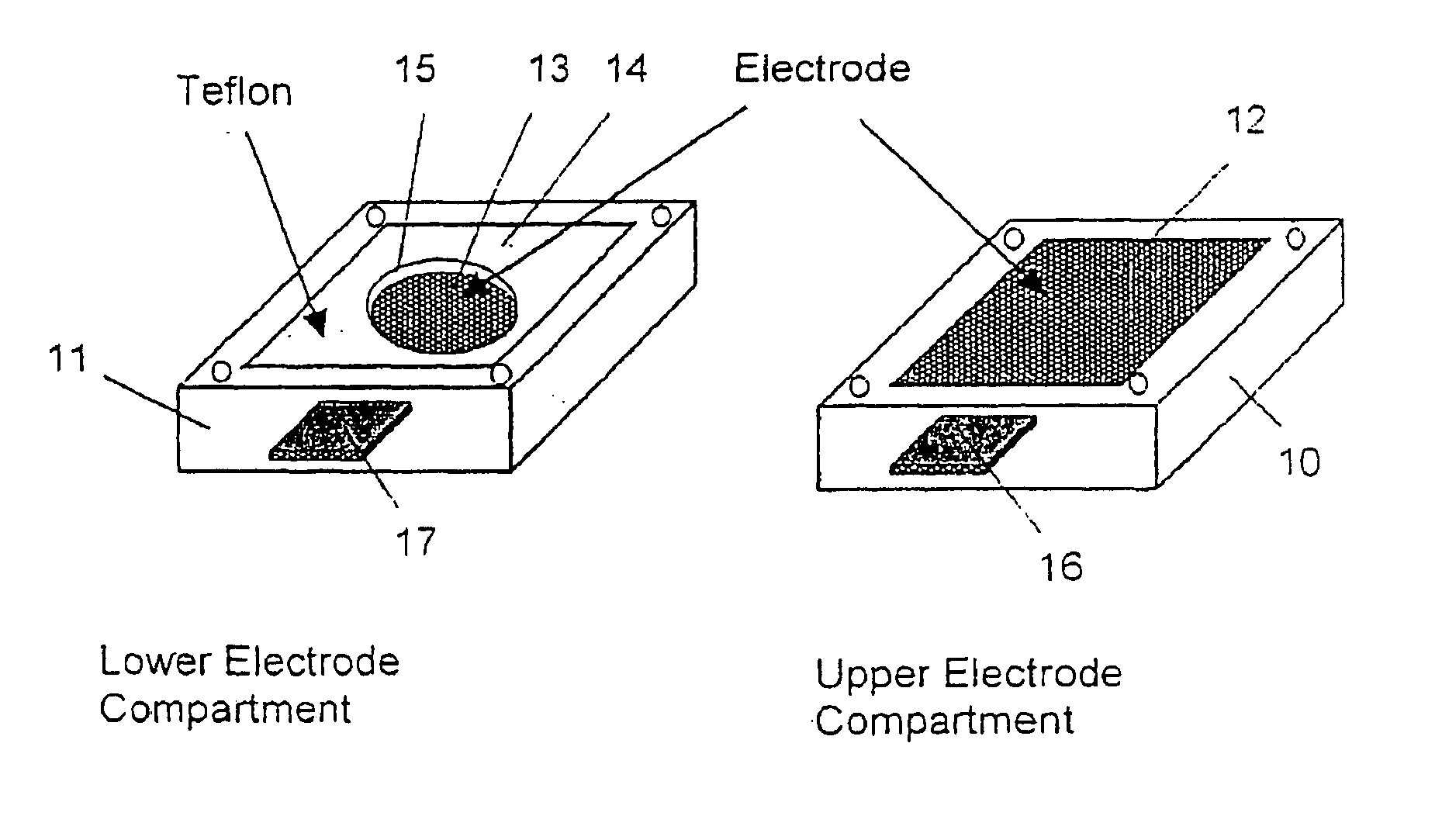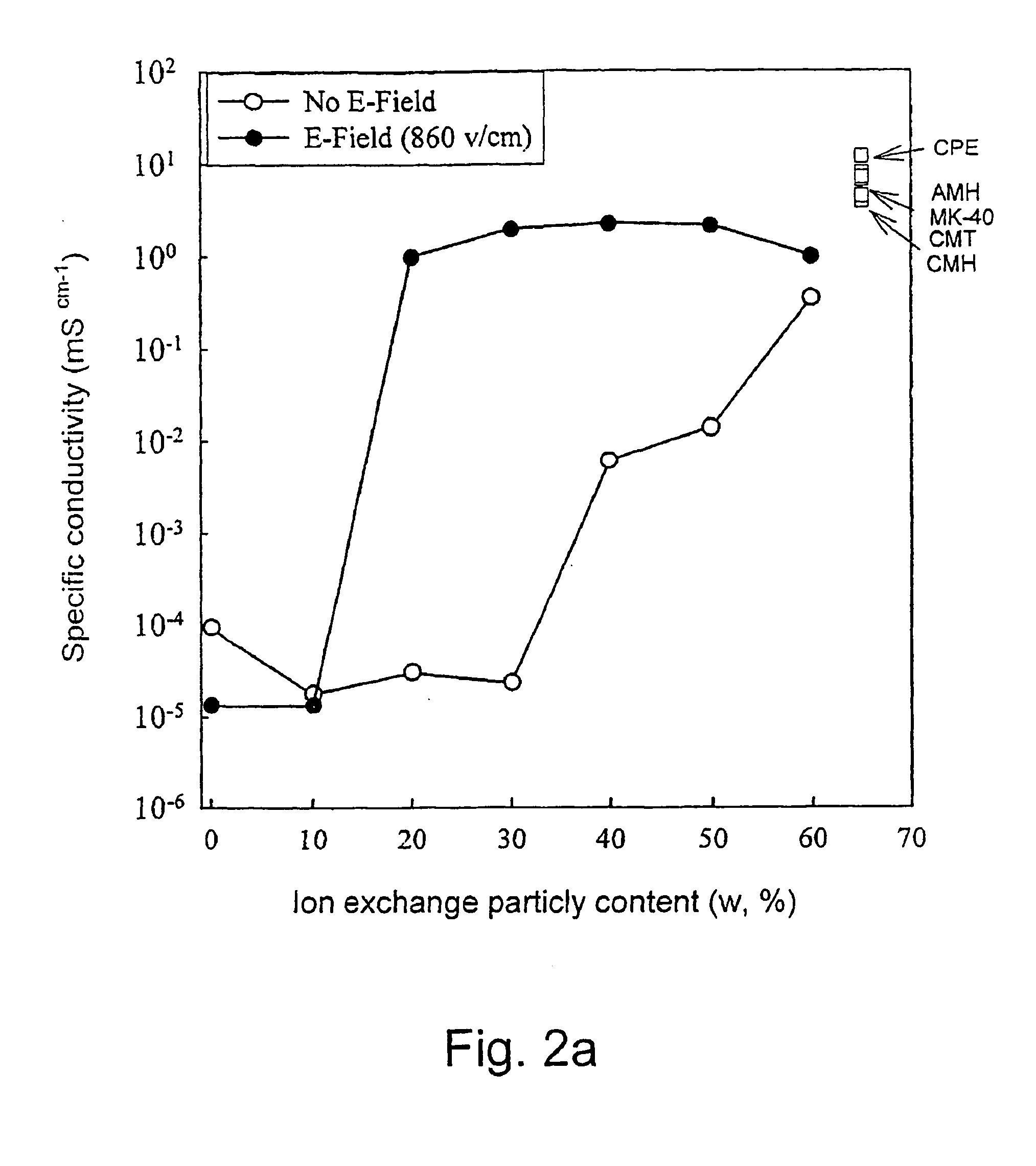Highly conductive ordered ion exchange membranes
- Summary
- Abstract
- Description
- Claims
- Application Information
AI Technical Summary
Benefits of technology
Problems solved by technology
Method used
Image
Examples
example 1
[0118] Membrane samples of different cation exchange resin content were prepared by using quantitaties of matrix precursor (two component silicon rubber-RTV) and cation exchange resin powder made of spherical particles 30-40 μm in diameter according to the following Table IV:
TABLE IVResin ContentMatrix Precursor (gr)(W %)Component AComponent BResin Powder (gr)100.8110.0890.1150.7720.0780.15200.7270.0730.2300.6360.0640.3400.5450.0550.4500.4550.0450.5
[0119] The components were mixed together and the viscous mixture was poured into the membrane preparation form described in FIG. 1. The cell was closed with the upper electrode module and a 50 Hz AC electric field of strength of 860 V / cm was applied between the electrodes for 4 Hrs at room temperature. The cell was then opened and the cured membrane taken out and equilibrated in 0.1 M KCl solution. The same procedure was applied to a second preparation but without the electric field. The conductivities of the ordered and non-ordered me...
example 2
[0120] The same procedures as in example 1 were applied to a 200 to 270 mesh cation exchange powder with non-spherical particles. The results are depicted in FIG. 2b, with significantly improved conductivity for the ordered membranes compared with the non-ordered ones.
example 3
[0121] The same procedures as in Example 1 and 2 are applied to powders made of spherical and non-spherical anion exchange resins. As in the previous examples, the ordered anion exchange membrane thus obtained have a much larger specific conductivity as compared to the random ones.
PUM
| Property | Measurement | Unit |
|---|---|---|
| Length | aaaaa | aaaaa |
| Time | aaaaa | aaaaa |
| Diameter | aaaaa | aaaaa |
Abstract
Description
Claims
Application Information
 Login to View More
Login to View More - R&D
- Intellectual Property
- Life Sciences
- Materials
- Tech Scout
- Unparalleled Data Quality
- Higher Quality Content
- 60% Fewer Hallucinations
Browse by: Latest US Patents, China's latest patents, Technical Efficacy Thesaurus, Application Domain, Technology Topic, Popular Technical Reports.
© 2025 PatSnap. All rights reserved.Legal|Privacy policy|Modern Slavery Act Transparency Statement|Sitemap|About US| Contact US: help@patsnap.com



